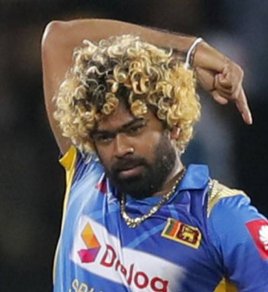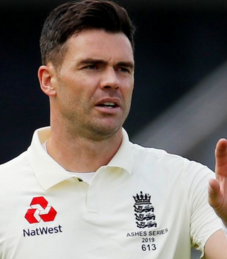Best
Bowlers in 90s
90s
was a time when some of the best bowlers reigned in cricket. Many bowling
records were made by the bowlers of that era. Team Predictors discuss about the
two best bowlers from each team in 90s.
1.
Australia: Glenn McGrath & Shane Warne
Glenn
McGrath:
Glenn
McGrath was a disciplined bowler who was too precise with his line and length.
Consistency was the term you could relate with the great bowler. McGrath was a
part of 4 Australian World cup squads from 1996 to 2007. He has the most number
of wickets in the world cup. The pacer has picked 71 wickets in world cup. He
was the highest wicket taker in 2007 World cup with 26 scalps. He is second in the list of fast bowlers
behind James Anderson with the most number of wickets. McGrath has 563 test
wickets from 124 matches at an average of 21.64.
In ODI he has 381 wickets from 250 matches. McGrath was very economical in his outings and just hated to give away runs. The bowler has the rare distinction of picking up wickets in the last ball of his test, ODI and T20 careers and also holds the record of dismissing most number of batsmen for a duck.His career best performance of 8/24 in tests came against Pakistan. In ODIs his best bowling figures of 7/15 came against Namibia.
Shane
Warne
Widely regarded as the best leg spinner to
ever play cricket Shane Warne has more than 1000 international wickets. He has
708 wickets from 145 test matches at an average of 25.41. He had an ordinary
beginning to his test career where he could only pick 1 wicket for 228 runs in the
series against India.But as we all know, he ended up as the second highest
wicket taker in tests. Everyone remembers the 'ball of century' from Warne
which dismissed Mike Gatting of England in Ashes 1993. The ball turned from
well outside the leg stump to clip the offstump .Warne was caught in some
controversies when he was charged guilty for giving informations regarding
pitch and whether conditions to the bookies. In 2003 he was banned from cricket
for 1 year when he was tested positive for some banned drugs. His career best
figures of 8/71 came against England at Brisbane in 1994.

In ODI his best
figures are 5/33 against West Indies in 1996 at Sydney.In ODI he has 293
wickets from 194 matches at an average of 25.73. In 1999 World Cup final he
took 4 wickets for 33 runs and was adjudged as Man of the Match. He was the
highest wicket taker of the 1999 World Cup tournament.
2.India:
Javagal Srinath & Anil Kumble
Javagal
Srinath
After
retirement of Kapil Dev, Javagal Srinath was the leader of the Indian pace
attack for some years. He could generate real pace and was a great asset. He
has taken 236 test wickets in 67 matches at an average of 30.49. In ODIs he has
315 scalps from 229 matches at an average of 28.08. Javagal Srinath is the only
Indian fast bowler to take more than 300 wickets in ODIs.
He has played in 4
world cups from 1992 to 2003 and his tally of 44 wickets is the highest number
of wickets by an Indian bowler in world cups. Zaheer Khan also have take the
same number of wickets.His best bowling figures in tests of 8/86 came against
Pakistan at Kolkata. In ODI his best bowling figure is 5/23 .
Anil
Kumble
Anil
Kumble is the most successful bowler for India in terms of the wickets. Unlike
his contemporaries he was not a great turner of the ball and depended more on
pace and bounce. He hurried the batsmen into their shots and at times deceived
them with his googly. He has 619 test wickets,which is the most number by an
Indian and also third highest in the world behind Muttiah Muralitharan and Shane
Warne. Anil Kumble has also picked 337 wickets from 271 ODIs which is the
highest for an Indian in ODI.

Anil Kumble is the only bowler after Jim Laker of
England who has picked all the 10 wickets in a test innings. He got the record
against the arch rivals Pakistan at Ferozshah Kotla,Delhi. But he could not
dismiss Waqar Younis in both innings. That marked his best bowling figures of
10/74 in tests. In ODI his best bowling figure is 6/12 against West Indies.
Anil Kumble had a great year in 1996 when he picked 61 wickets in the calendar
year. It continues to be a record for most number of ODI wickets in a calender
year by an Indian.
3.
Srilanka: Chaminda Vaas & Muttiah Muralitharan
Chaminda
Vaas
Chaminda Vaas had been the opening bowler for
Srilanka for some time. The swing bowler had led the bowling attack with grace.
At times Vaas was overshadowed due to the towering presence of Muttiah
Muralitharan. Vaas was known for his accuracy and swing. Vaas has taken 355
wickets from 111 test matches at an average of 29.58. Vaas had a smooth running
action and seldom got injured unlike his fellow pacers in world cricket.
He
took 400 wickets from 322 ODI at an average of 27.53, which included a career
best performance of 8/19 against Zimbabwe. The Srilankan took a hat-trick off
the very first three deliveries of Bangladesh innings in a 2003 world cup.
Chaminda Vaas was the highest wicket taker in 2003 world cup with 23 wickets.
Muttiah
Muralitharan
Muttiah Muralitharan was one of the first
wrist off spinner to play international
cricket. His super flexible wrist has gifted him a whopping 800 test wickets
from 133 matches at an average of 22.72. He is the ever time leading wicket
taker in both Tests and ODI. In ODI he has taken 534 wickets from 350 matches
at an average of 23.08.
His unusual wrist action has also landed him in
trouble. There were incidents when on field umpires called his action illegal.
But later ICC cleared him off the charges and the spinning wizard continued his
journey.
4.
South Africa: Allan Donald & Shaun Pollock
Allan
Donald
Often described as the 'White Lightning'
Allan Donald was lightning quick and
could destroy any batting units with his fearsome bowling. The name Allan
Donald might bring into the memories of cricket fans , the unfortunate run out
in the 1999 World Cup semi final. But lets not forget that Donald had taken 4
wickets for 32 runs in the same match.
In fact he had taken 16 wickets at an
average of 20.31 in 1999 World Cup. Allan Donald has a tally of 330 test
wickets from 72 matches with a career best performance of 8/71 at an average of
22.25. In ODI he has 272 wickets from 164 matches at an average of 21.78.
Shaun
Pollock
Shaun
Pollock the great South African fast bowler comes from a family of cricketers.
His father Peter Pollock and Uncle Graeme Pollock have donned South African
jersey before him. Pollock was known for his disciplined bowling. He could move
the ball both ways and he was a genuine all rounder.
He announce his
introduction to the ODI scene with a four wicket haul and a half century in his
debut game. The former South African captain has taken 421 wickets from 108
matches at an average of 23.11.In ODIs he has taken 393 wickets from 303
matches at an average of 24.50.His economy of 3.6 in ODI is one of the lowest
among modern day cricketers.
5.
England: Darren Gough & Andrew Caddick
Darren
Gough
Darren Gough had an impressive start to his
test career when he took 4 wickets in the first innings and then scored 65
runs. But unfortunately Gough could not continue his batting heroics as he
could only score another half century in his entire career. But Gough was the
bowling spearhead of England in mid and late 90s.
The late swinging yorkers of
Gough created headache even to the best of batsmen. Darren Gough took 229 wickets from 58 tests at an average of
28.39. In ODI he took 234 wickets from 159 ODI at an average of 26.42. He is
the second highest wicket taker for England in ODI.
Andrew
Caddick
England lacked those fearsome pacers or sharp
turning spinners in 90s. So Team Predictors find it quite difficult to choose a
second great bowler in the English team in 90s.
Andrew
Caddick was a good bowler and found it easier in test set up rather than in
ODIs. His records in test cricket is found to be far better than that in ODI.
In test cricket he has picked 234 wickets in 62 tests at an average of just
above 29. He has taken 13 five wicket hauls in tests. In ODI he has taken 69
wickets from 54 ODI. Unfortunately he never had a five wicket haul in ODI and
his career best performance in ODI is 4/19.
6.
West Indies: Curtly Ambrose & Courtney Walsh
Courtney
Walsh
Courtney Walsh, the former West Indies
captain is one of the greatest bowlers ever to have played for his country.
Walsh was more successful in Tests than ODIs. Walsh was the first bowler to
take 500 test wickets.In tests he has 519 wickets from 132 matches at an
average of 24.44.
In ODI he has 227 wickets from 205 matches. That was a bit
low by his standards. He famously picked 5 wickets conceding just 1 run against
Srilanka in an ODI in 1986. Interestingly that was his only five wicket haul in
the ODI.In test his best bowling figure is 7/37.
Curtly
Ambrose
Curtly Ambrose was a real menace for even the
greatest of batsmen of his era. With his height he could produce more bounce
off the pitch and together with his pace and line, it was difficult to score
against him. Ambrose came as a replacement for Joel Garner in the team and in
his ODI debut match against Pakistan he had a bowling figures of 4/39. But his
Test debut were not so impressive where he could take only 2 wickets for
121 runs.
The fearsome fast bowler was
responsible for several victories for his team and West Indies was in a state
of decline during his last playing years. Ambrose has 405 test wickets from 98
test matches at an impressive average of 20.99 and career best figures of 8/45.
In ODI he has picked 225 wickets from 176 matches at an average of 24.12.
7.
Pakistan: Wasim Akram & Waqar Younis
Waim
Akram
The name Wasim Akram brings into our mind
that one word, 'Swing'. The Sultan of swing, Wasim Akram is the second highest
wicket taker in ODIs with 502 wickets
from 356 matches at an average of 23.52.He has a career best performance of
5/15. He was the first bowler to take 500 wickets in ODI.From 104 test matches,
he has taken 415 wickets at an average of 23.62.
Wasim has taken 23 five-wicket
hauls in test matches. He has taken 4 hat-tricks in international cricket, two
apiece in ODI and tests. He had a great weapon in his repertoire in addition to
the normal swinging deliveries, that was the reverse swing. He was one of the
bowlers who spread the art of reverse swing, which was till then unknown to the
cricketing fraternity.His highest score in tests is 256 not out against
Zimbabwe.
Waqar
Younis
Waqar Younis along with Wasim Akram formed
the deadliest pace attack in cricket. Waqar could reverse the ball and that too
at great pace. Batsmen found it hard to tackle those swinging deliveries. Waqar
was the youngest to take 400 wickets in ODI.
He has 416 wickets from 262 ODIs
at an average of 23.4. In test matches he has taken 373 wickets from 87
matches. Waqar was found in some controversy when he was banned for tampering
with the ball in 2000.
8.
New Zealand: Daniel Vettori & Chris Cairns
Daniel
Vettori
Daniel
Vettori was the first left arm spinner to reach 300+ wickets in both ODI and
tests. The player who made his debut at an age of 18 is the most capped player
for Newzealand. Vettori was not a great turner of the ball, but depended on
flight and variations.
The crafty bowler has 362 wickets from 113 test matches
at an average of 34.36. In ODIs he has 305 wickets from 295 matches. Vettori
was more than a useful batsman. He has scored 6 test centuries with a top score
of 140. His best bowling figure in test and ODI reads 7/87 and 5/7
respectively.
Chris
Cairns
Chris Cairns was one of the greatest all
rounders ever to have played for NewZealand. Cairns has picked 218 wickets from
62 test matches at an average of 29.40. Cairns' injuries necessitated a drop in
pace and in latter stages he depended on tight length and slower deliveries .
He has 200 wickets from 215 ODI matches . Cairns have a test batting average of
33.53 with a highest score of 158. He is the sixth highest wicket taker for
NewZealand in tests
















































